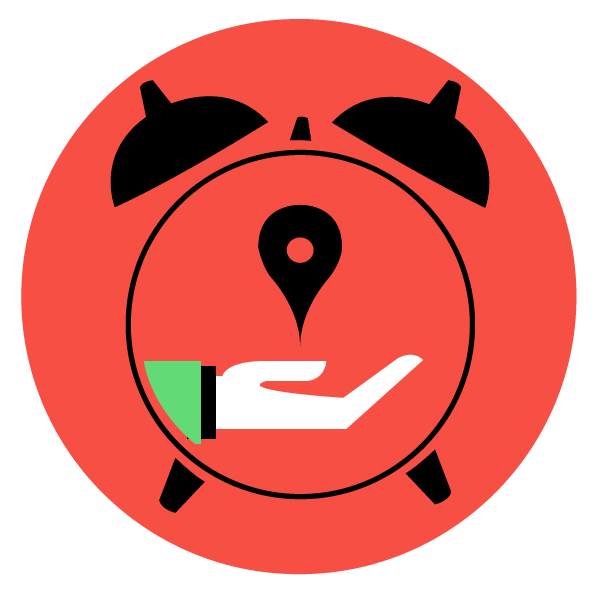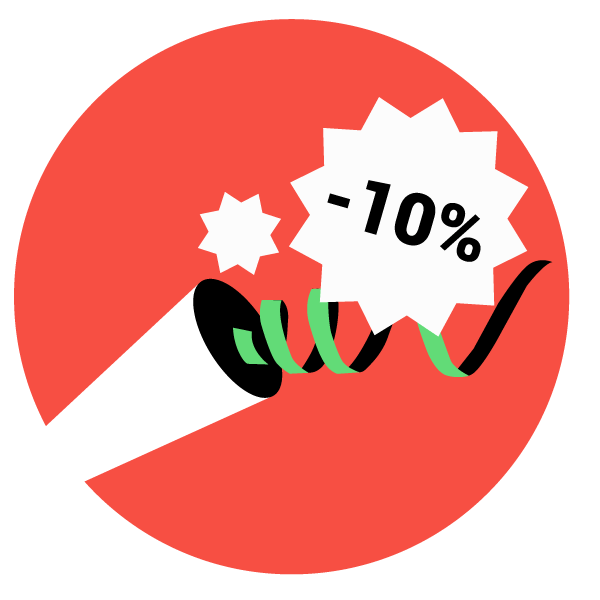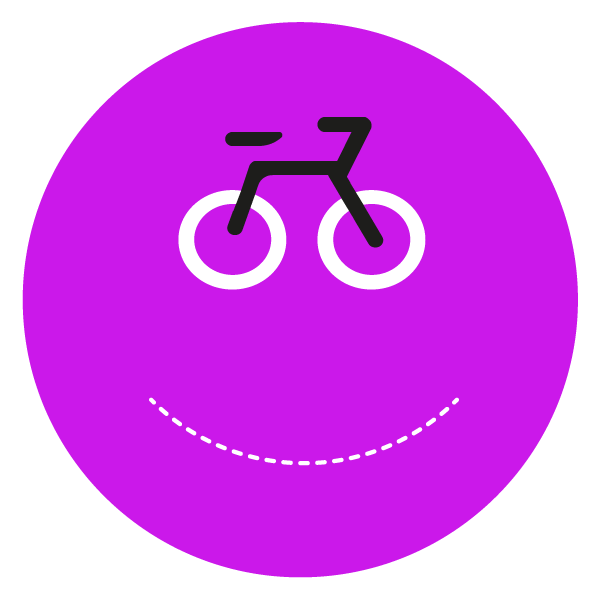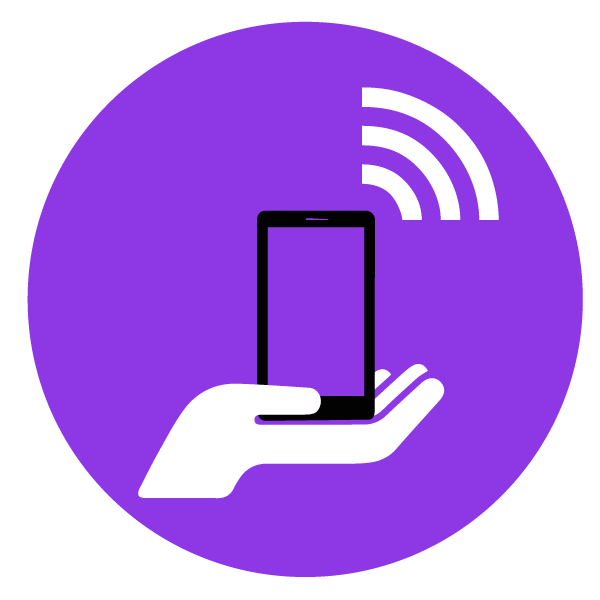The region will be full of opportunities in 2015...
...if you don't take advantage of them, someone else will!
Major events, key elections, people in the streets protesting for their rights and better living conditions. In South & Central America, 2014 was marked by increasing public involvement in social and economic issues.
The impact of this is not limited to policy makers. More aware of their rights and duties, people also want to consume better: pay fair prices, see brand-led campaigns that have real impact on their lives, and have access to world-class products & services that address their unique problems.
So, are you ready to find the best opportunities in the region for your brand, or your clients, to stand out and deliver in 2015?
This list is all about opportunities.
Trends are just a (smart!) way to fuel compelling, profitable innovations.
In this Trend Bulletin we’ve gathered the ten consumer trends that your team should focus on to meet and surpass the ever-changing expectations of consumers in South & Central America.
While you are probably excited (and rightly so ;) to get to the trends, remember that these insights and innovations are useless if you don’t act on them.
Of course, be inspired by the examples that underpin these new currents, but be sure to ask what YOU can do to adapt, evolve and build upon the ideas for your business – before your competitors do!
10 crucial consumer trends for South & Central America in 2015
1. IN-HAND BRANDS »
Serve consumers in the right place at the right time.
2. BRIGHT IS BEAUTIFUL »
Love of knowledge as a status play.
3. RECONCILIATION BRANDS »
The fight against inequality.
4. DEMOCRATIC PRICING »
Let consumers have their say.
5. INSIDE OUT »
Help urbanites enjoy outdoor spaces.
10 crucial consumer trends for South & Central America in 2015
(...continued ;)
6. PLAYFUL PERKS »
Inject joy into rewards.
7. CITY CONNECTIONS »
Help people get together.
8. OK COMMUTER »
Make consumerism flow.
9. ONLIFE SERVICE »
Serve with added convenience.
10. BRAND STANDS »
Take a stand.
NEW…we want YOUR thoughts on these trends!
After the trends (right near the end!), you can rate the opportunities these trends present, and see what others think, too.
1. IN-HAND BRANDS
Be a BRAND BUTLER: serve consumers in the right place at the right time.
1. IN-HAND BRANDS
In 2015, will your product or service be there the moment Latin consumers need it?

As South & Central American consumers’ expectations grow, their patience shrinks. Smart brands are seamlessly integrating themselves into people’s lives with a sense of urgency.
Busy consumers hate to waste time, they need problems solved and desires realized NOW.
In 2015, they will demand brands add resources and create shortcuts that speed up delivery of their offering(s). And the best brands will be where and when they are needed, before the consumer even knows they want them.
So, when and where do your consumers need (or expect) immediate service?
Piero, Forever 21 and Hellmann's
In May 2014, Argentinian mattress brand Piero launched a campaign to raise awareness of road accidents caused by drivers falling asleep behind the wheel. Between 4am and 5am (when most accidents due to tiredness occur), the brand aired radio adverts featuring an alarm clock sound every nine minutes, reminding drivers of the potential danger and keeping them alert.
To help people during fashion emergencies (unexpected dates or duplicated party outfits, for example), fashion retailer Forever 21 ran a promotion in May 2014 in Costa Rica called ‘Closet S.O.S’. 100 customers could request a visit from a mobile fashion truck stocked with apparel and accessories.
In Brazil, in May 2014 Hellmann’s launched #PreparaPraMim (#PrepareForMe), a social media campaign that invited people to use the hashtag along with available ingredients on Twitter. The brand then responded with customized recipes.
2. BRIGHT IS BEAUTIFUL
Love of knowledge, a growing status play.
2. BRIGHT IS BEAUTIFUL
Consumers will love brands that help them show off their knowledge in 2015.

BRIGHT IS BEAUTIFUL and South & Central Americans are desperate to flaunt evidence of their educational endeavors – as status symbols – to their family, friends and followers.
What does this mean for brands in 2015? Beyond integrating learning and literary experiences into consumers’ daily lives (see STATUS SMARTS), consider how you can help consumers express (ok, show off ;) their knowledge.
Can you help them do this through social networks? In Latin America people spend more time on social networks than anywhere else in the world, averaging 8.67 hours per month (comScore, July 2014). Perhaps the opportunity lies offline? Even a pair of jeans can be used to flaunt a love of literature.
FreeSurf and L&PM Pocket
In July 2014, book publisher L&PM Pocket partnered with fashion brand FreeSurf to launch an exclusive collection of jeans in Brazil. The Original Pocket Books range had stories and poems from the publisher’s authors printed on the inside of the pockets to demonstrate the convenience of pocket-sized books.
3. RECONCILIATION BRANDS
Mend the social fabric.
3. RECONCILIATION BRANDS
In 2015, take a position in the fight against inequality.

Despite all the progress in South & Central America, there are strong strands of inequality and barriers that divide people in the region. Financial hardship, inequality and prejudice. Routine for many, yet brands traditionally avoid confrontations – such as the rolezinhos (teenagers that used social media to meet at shopping centers) or the polarized elections in Brazil.
In 2015, brands cannot ignore these issues. The gap between rich and poor is a serious issue for 68% of Brazilians (Pew Research, June 2014). Brave brands (large and small) will jump into the discussion.
Will you do your part to promote dialogue, mend wounds, and reconcile?
Soy Capaz, Tortrix and LT8
Asociación Nacional de Empresarios de Colombia (ANDI) launched the Soy Capaz campaign in September 2014, gathering 120 companies – such as Coca-Cola, Bancolombia and McDonald’s – to rally the country by spreading messages for peace. Coltabaco, for example, placed personal stories into Marlboro cigarette packs, written by rural workers.
The radio station LT8, from Argentina, launched Escuchémonos (“let’s listen to each other”) in May 2014, a campaign anchored in the concept of tolerance, acceptance and understanding amongst the key public figures of Argentina: from politicians, to journalists, to footballers and even the Pope.
Embajada Zona 18 (“Embassy Zone 18”) is an initiative of Tortrix and nonprofit Area 18 to protect the labor rights of Zona 18 citizens in Guatemala, who are often refused job interviews because gangs control the area. Since April 2014, Embajada Zona 18 has provided a verifiable address for jobseekers to use on applications and a website for people to upload résumés, find vacancies and access training.
4. DEMOCRATIC PRICING
Let consumers have their say.
4. DEMOCRATIC PRICING
Let Latin American consumers decide what you're worth.

In March 2014 we highlighted EMPATHETIC PRICING: targeted discounts that address consumers’ pain points. In 2015, consumers – increasingly accustomed to participation – will drive pricing into new territory.
South & Central American consumers, having lived through years of price fluctuations, will be confident they know what products and services should cost. They’ll demand brands go beyond EMPATHETIC PRICING, and allow them to participate in pricing.
Afraid of discovering how much consumers truly value you? Use DEMOCRATIC PRICING in 2015 to show confidence in your offering and respect for your customers.
TechBoy and Atado
TechBoy is a Brazilian company launched in September 2014 that offers online IT support, providing solutions to common technical problems and assisting with web development via Skype. At the end of each session, the customer is told the average price charged for the service they received, but they can choose how much they pay (or if they pay at all).
A collective of artists, publishers and entrepreneurs in Argentina created in August 2014 Atado, a project to sell comics from independent Argentinian artists at Comicópolis, a comics festival in Buenos Aires. Consumers could pay as much as they wanted for seven digital comics and fanzines.
5. INSIDE OUT
Help urbanites enjoy outdoor spaces.
5. INSIDE OUT
Why consumers from South & Central America will love brands that take it outside in 2015.

Latin Americans have been hiding (from urban violence) in malls, stuck in traffic, and cramped in condos for years. But since the 2013 protests in Brazil and Mexico, and Venezuela in 2014, residents are rediscovering the value of getting out.
In 2015, urbanites will gather outdoors – from food markets to reclaimed parking spaces – to share experiences. Brands can contribute to making spaces clean, safe and delightful.
62% of Brazilian consumers would exchange the brand they usually buy, for one that improves their city, supports culture and wellness and offers free leisure.
(Ibope/Conecta, August 2014)
Help consumers take it outside!
Pracinha Oscar Freire and Park(ing) Day Chile
Pracinha Oscar Freire, in the Jardins neighborhood of São Paulo, is a small garden created in June 2014 by the public space developer REUD and the NGO Instituto Mobilidade Verde. Once a week, the space promotes a Bring Your Own Work (BYOW) event, and invites people to work outdoors for the day. Trucks serve workers with food and drinks (the kind you have while working, and the kind you have at happy hour ;).
Park(ing) Day Chile is an event where artists, designers and citizens collaborate to temporarily transform (for a day) parking spaces into public green areas. Park(ing) Day 2014 Chile on November 7, invited people to gather at the spaces to promote creativity, civic engagement, critical thinking, social relations and generosity.
6. PLAYFUL PERKS
Inject joy into rewards.
6. PLAYFUL PERKS
Don't be too serious, Latin consumers will lap up playful perks ;)

Brands in South & Central America often aim for a serious tone of voice to be viewed as professional or respectful. But the explosion of social networks (and brand-run accounts) changed what consumers expect from brands. Interactions with brands should be human: 73% of consumers in Brazil expect brands to build a meaningful relationship with them (Edelman, October 2014).
In 2015, HUMAN BRANDS will go beyond joking with fans and followers online, and will excite consumers with playful perks and surprising interactions.
Forget about the familiar formulae of perks. Your rewards must be provocative, exciting and playful to resonate.
Skol and Claro
During the FIFA World Cup in June 2014, beer brand Skol launched Consulado: a platform connecting Brazilians with tourists and soccer fans. Locals who welcomed visitors to host cities – by promoting local shops or sharing Skol beers and taxi rides for example – were rewarded with discount vouchers or free bottles of Skol.
In Costa Rica, telecoms brand Claro’s Extra Minutes is an initiative that gifts free minutes based on the amount of extra time added to a soccer game. If officials add five minutes, pre-pay customers can claim the same amount in talk time using a code displayed via digital signage around the stadium and on-screen. The promotion ran at all of Saprissa FC’s home games. As of April 2014 (the end of the soccer season) Claro had donated more than 50 million extra minutes.
7. CITY CONNECTIONS
Help city residents get to know each other.
7. CITY CONNECTIONS
Lonely urbanites will love brands that bring them together.

Thanks to the continuing urbanization of South & Central America, and the rhythm of big cities (lots of work, little time off), many residents hardly know their neighbors.
In 2015, lonely urbanites will increasingly want to break down the social barriers that are part of city living. Brands that design their product or service as a way to integrate consumers in the social, public spaces of their city will be embraced.
Is your brand ‘friendly’ enough to help city residents connect? The more connections you drive, the more you will be loved <3
Zezé and Chivas Regal
In August 2014, cookie brand Zezé launched a campaign to encourage strangers to talk when they are at the bus stops in Pelotas, in Brazil. Stickers (featuring suggestions about how to start a conversation, such as, “What are your favorite songs?”) marked certain seats as reserved for people who would like to start friendships.
Chivas Regal reinterpreted a traditional game from Festa Junina (June festivities in Brazil) called Correio Elegante (“elegant mail”), where players send anonymous love notes. The whisky brand put a WhatsApp number on Facebook and participants who messaged the account with the name and phone number of their love interest could have a virtual barman deliver their love note.
8. OK COMMUTER
Make consumerism flow with each consumer's route.
8. OK COMMUTER
In 2015, Latin Americans will embrace brands that seamlessly fit within their journeys.

The crossover between retail and transportation is surely one of the most exciting new areas to be explored in South & Central America.
Inhabitants of São Paulo, Mexico City, Buenos Aires, Bogotá and Lima face a typical commute of 1 hour and 28 minutes.
(Inter-American Development Bank, March 2014)
Consumers in the region are embracing new forms of METRO MOBILITY (from taxi apps and shared rides to revitalized public transport). As the associated status around transport shifts from car ownership to unique experiences, the ability to shop en route will be an experience to be cherished in 2015.
Boxeway and Netshoes
Boxeway is an Argentine company that is launching ‘click & collect’ lockers in Latin America. Consumers can buy an item online and pick the product at one of the lockers, placed in high transit areas such as gas stations or train terminals. Lockers are rented by retail brands, who notify customers by SMS or email when their items have reached a locker. In September 2014, Boxeway developed a system for the logistics company Oca.
In May 2014, Netshoes, a Brazil-based sports etailer, launched the Sport Machine, the first vending machine to sell the strip of Brazil’s national football team. The Sport Machine was installed in subway stations and universities in São Paulo. The machines allow customers to interact with the contained products on a touch-screen high-resolution display, where they can be rotated 360°.
9. ONLIFE SERVICE
Manage consumers' connected lives with added convenience.
9. ONLIFE SERVICE
In 2015, add control and convenience to Latin consumers' online lives.

How much time should you be on Facebook? Is it ok to text during dinner? Is your data safe? Online life has to be managed (see ONLIFE MANAGEMENT), and it takes time and attention for Latin Americans still discovering the superpowers of smartphone-assisted living.
In 2013, Latin America saw a greater increase in smartphones sales than any other region.
(Gartner, February 2014)
In 2015, while consumers want brands to help them manage their online lives, they still expect to be served and assisted, with total convenience. Brands must help them use technology in ways that are safer, healthier and more productive.
Lew'Lara/TBWA and Google
In August 2014, Brazilian advertising agency Lew’Lara/TBWA installed an “anticellular totem” at their headquarters in São Paulo. The container is outside the meeting room, and employees are encouraged to put their devices in there before going into meetings, so they aren’t distracted. If any important calls do come in, a secretary will alert the recipient.
To improve the quality of navigation for those who have a slow internet connection in Brazil, Google created a lighter version of the main page. Since October 2014, when someone searches Google.com.br on a smartphone for any keyword, the servers automatically identify the connection speed and fit the page quality for maximum loading speed.
10. BRAND STANDS
Meaningful brands will take a stand.
10. BRAND STANDS
In South & Central America, consumers will embrace brands that take a stand (or two) on the issues that matter to them.

According to Pew Research in June 2014, 72% of Brazilians are unsatisfied with the country. Events such as the World Cup and upcoming Olympics made consumers in South & Central America (not just Brazil) rethink the use of public space and their local infrastructure, causing a desperate desire to improve the region to match their national pride.
Finding a solution is not only the government’s concern, people feel empowered to make changes themselves. And they want brands to step up and take a stand. In 2015, they will expect brands to prove they’re committed to the same causes they are.
There are many issues out there – from bullying to bureaucracy – where will you take a stand?
VH1 and Dermacyd
VH1 Latin America unveiled its Revenge of the Nerds campaign against bullying with a comedy TV campaign. A music video cover of Gloria Gaynor’s “I Will Survive” launched in April 2014, starring a bunch of young geeks being tortured and brutalized by other kids. The victims of bullying sing that they know in the long-run the tables will turn dramatically, and they will become the bully’s bosses.
After multiple cases of violence against women on São Paulo’s subway, in June 2014 feminine hygiene brand Dermacyd launched a campaign to create female-only subway cars in the city. Women-only cars already exist in Rio de Janeiro and Brasilia, and Dermacyd created ads in subway stations in all three cities. Via a dedicated Dermacyd microsite, consumers could sign a petition which was sent to Brazil’s government.








